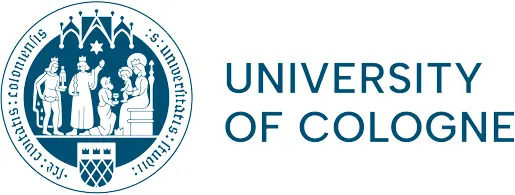1. Motivation
In our models, technology is the feature that differentiates one human group from another. For example, a group that hunts with bows would be considered culturally distinct from a group that does not. Technology is sometimes called ‘cultural complexity’ and may include physical infrastructure such as tolls as well as the knowledge of how to use them.1–7
A key motivation for including technological innovation in our models is that technological innovation is thought to raise population density.8 Population density in turn influences things like migration. We expect technological differences to affect how the available resources in a given area can be used by the human population. Hunters with bows may be able to catch game more easily, or to catch entirely different species of game, than those without bows. If so, then this allows hunters with bows to extract more resources from the same area, and thus support a higher theoretical maximum population on the same area of land.
2. Theories of technological innovation
We could thus use own models to investigate theories about how technological innovation relates to population size and connectedness, and to scarcity and sufficiency.
2.1. Technological innovation increases with population size and connectedness
There is reasonable consensus that technological innovation tends to increase as population size increases. Intuitively, larger populations are more likely to maintain existing innovations. For example if there are many expert bow makers in a group then the untimely death of one will not lead to the loss of bow making techniques. Also, larger populations tend to have both a larger pool of experts from which learners can learn, and a larger pool of learners who might improve upon the work of the experts and thus are more likely to make improvements.
Secondly, even small populations can retain and innovate technology if they remain well connected to other populations. The similar mechanisms are similar to the mechanisms relating population size to innovation: if a population is well connected to other populations which can preserve knowledge and provide a larger pool of experts and learners, then innovation is more likely.9,10
2.2. The rate of innovation increases with either scarcity or sufficiency
There are opposing theories that either scarcity or sufficiency can drive invention. Though opposed, each may hold in different times and places.1,2
The first is the theory that human groups invest in technological invention that increase yields in response to scarcity, thereby raising the potential for increased population density. This theory is associated with the agricultural economist Esther Boserup.2,6
The second is that innovations are more likely to take place when there are sufficient resources. A strong version of this argument,popular among economic historians, is known as the ‘induced development’ approach. Simply, if land and labour are scarce but there is abundant capital, then that capital will be used to develop the technology to make more intensive use of land and labour.11,12
This work promises a new way for understanding the way that humans are driven to engage in with the earth system.

References
1. Richerson, P. J., Boyd, R. & Bettinger, R. L. Cultural Innovations and Demographic Change. Human Biology 81, 211–235 (2009).
2. Richerson, P. J. & Boyd, R. Homage to Malthus, Ricardo, and Boserup: Toward a General Theory of Population, Economic Growth, Environmental Deterioration, Wealth, and Poverty. Human Ecology Review 4, 85–90 (1997).
3. Cohen, J. E. Population Growth and Earth’s Human Carrying Capacity. Science 269, 341–346 (1995).
4. Seidl, I. & Tisdell, C. A. Carrying capacity reconsidered: from Malthus’ population theory to cultural carrying capacity. Ecological Economics (1999).
5. Anderies, J. M. Economic development, demographics, and renewable resources: a dynamical systems approach. Environment and Development Economics 8, 219–246 (2003).
6. Freeman, J. et al. Hunter-Gatherer Population Expansion and Intensification: Malthusian and Boserupian Dynamics. J Archaeol Method Theory (2023) doi:10.1007/s10816-023-09617-6.
7. Wood, J. W. The Biodemography of Subsistence Farming: Population, Food and Family. (Cambridge University Press, Cambridge, England, 2020).
8. Puleston, C. & Winterhalder, B. Demography, environment, and human behavior. in Handbook of Evolutionary Research in Archaeology (ed. Prentiss, A. M.) 311–335 (Springer International Publishing, Cham, 2019). doi:10.1007/978-3-030-11117-5.
9. Deffner, D., Kandler, A. & Fogarty, L. Effective population size for culturally evolving traits. PLOS Computational Biology 18, e1009430 (2022).
10. Boyd, R., Richerson, P. J. & Henrich, J. The cultural evolution of technology: facts and theories. in Cultural Evolution: Society, Technology, Language, and Religion (eds. Richerson, P. J. & Christiansen, M. H.) vol. 12 119–142 (MIT Press, Cambridge, MA, 2013).
11. Anderson, E. N. The Biodemography of Subsistence Farming: Population, Food and Family. By James W. Wood. 2020. Cambridge University Press, Cambridge. 502 pp. EBL 12, 119–123 (2021).
12. North, D. C. Institutions, Institutional Change and Economic Performance. (Cambridge University Press, Cambridge, England, 1990).

